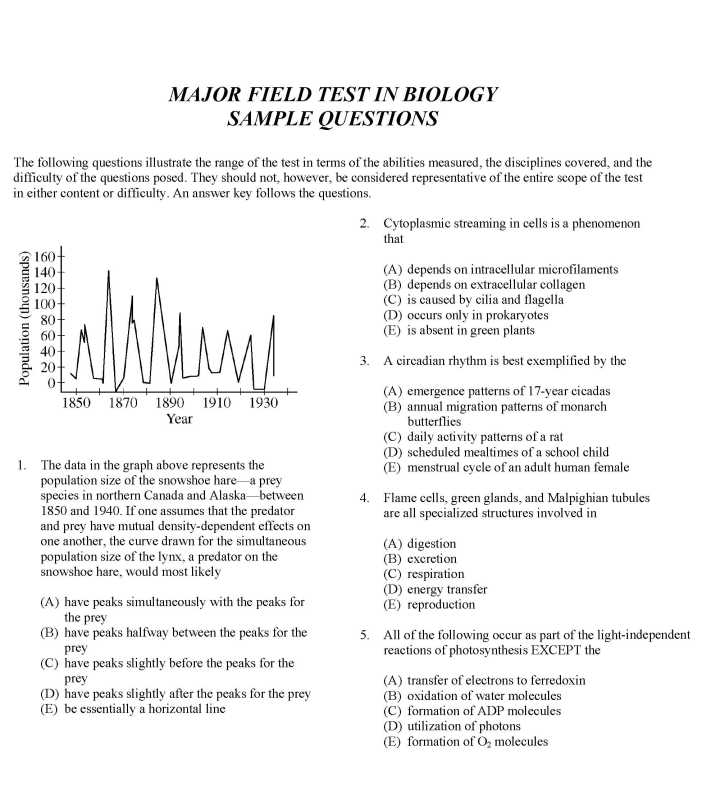|
#2
January 20th, 2016, 03:38 PM
| |||
| |||
| Re: GRE Biology Practice Test
Hello, here I am providing you the questions of the GRE biology subject as under: 1. The data in the graph above represents the population size of the snowshoe hare—a prey species in northern Canada and Alaska—between 1850 and 1940. If one assumes that the predator and prey have mutual density-dependent effects on one another, the curve drawn for the simultaneous population size of the lynx, a predator on the snowshoe hare, would most likely (A) have peaks simultaneously with the peaks for the prey (B) have peaks halfway between the peaks for the prey (C) have peaks slightly before the peaks for the prey (D) have peaks slightly after the peaks for the prey (E) be essentially a horizontal line 2. Cytoplasmic streaming in cells is a phenomenon that (A) depends on intracellular microfilaments (B) depends on extracellular collagen (C) is caused by cilia and flagella (D) occurs only in prokaryotes (E) is absent in green plants 3. A circadian rhythm is best exemplified by the (A) emergence patterns of 17-year cicadas (B) annual migration patterns of monarch butterflies (C) daily activity patterns of a rat (D) scheduled mealtimes of a school child (E) menstrual cycle of an adult human female 4. Flame cells, green glands, and Malpighian tubules are all specialized structures involved in (A) digestion (B) excretion (C) respiration (D) energy transfer (E) reproduction 5. All of the following occur as part of the light-independent reactions of photosynthesis EXCEPT the (A) transfer of electrons to ferredoxin (B) oxidation of water molecules (C) formation of ADP molecules (D) utilization of photons (E) formation of O2 molecules 6. Compared to a eutrophic lake, an oligotrophic lake tends to have a greater (A) supply of oxygen in the deep waters (B) number of blue-green algae (C) biological oxygen demand (D) amount of hydrogen sulfide (E) amount of degradable organic matter 7. Higher plants have a polar main axis with definite stem and root ends. This polarity is first established (A) when the seedling first grows into the light (B) when germination first starts in the soil (C) in the embryo of the seed (D) at the time the plant is old enough to produce leaves (E) just before the flower forms on the parent plant 8. The membranes of mitochondria, chloroplasts, and bacteria are all directly involved with all of the following EXCEPT (A) generation of ATP (B) generation of chemical gradients (C) generation of electrical potentials (D) pumping ions against concentration gradients (E) catalyzing the reactions of the Krebs cycle 9. Which of the following is released by the placenta and acts to assist in the maintenance of pregnancy? (A) Chorionic gonadotropin (B) Vasopressin (C) Thyroxine (D) Luteinizing hormone (E) Oxytocin 10. The evolutionary process most likely to account for the fixation of neutral or even nonadaptive allelles or allelle combinations in small populations is called (A) recombination (B) Lamarckian selection (C) Darwinian selection (D) Genetic drift (E) Mutation GRE bio paper:   |